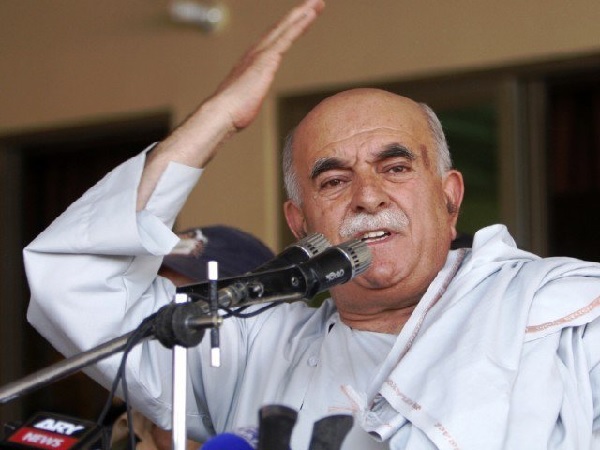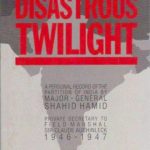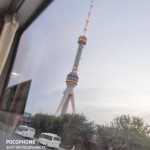By Yasub Dogar
Achakzai’s statement that we are Afghans and all Afghans have a right to come and settle in Pakhtunkhwa has caused anguish and constraints in many circles calling him a traitor or so. Let us first examine the history of the region for last thousand years or so.
It tells us that natural boundary of the Sub Continent was the Hindukush Ranges. The Hindo-Buddhist period is best signified by the Buddha’s mammoth statues at Bamian and other artifices found in Kabul and Jalalabad Valleys. Historically the father and son duo of Jaipal and Anandpal rulers of Kabul Valley and Jalalabad Plains were defeated by Mahmud of Ghazni.
The area was annexed, they withdrew to Peshawar, again defeated ceded Peshawar valley also to Mahmud of Ghazni. Although Mahmud raided and plundered area as deep as Kanauj and Somnath but retained territory only up to Lahore as part of his empire. In wake of invading armies also came Sufis like Data Ganj Baksh, Baba Farid, Moeenuddin Chisti, Nizamuddin Aulia, Bayazid Bistami in Bengal and many others who are responsible for spreading Islam in Sub Continent. This state of affairs continued for next few hundred years till the Moghul Empire came into being. Both Kabul and Kandahar were important provinces of the Moghul Empire.
Raja Man Singh was one of the most successful Governors of Kabul during the reign of Akbar and Jehangir. Later both Nadir Shah Afshar & Ahmad Shah Abdali had Punjab and Sindh as part of their Empires. Abdali’s successor proved to be weak and lost Punjab to the Sikhs and rest of India to Mahratta’s, Nizam of Hyderabad and the rising star of the East India Company. His descendants found refuge with Ranjit Singh.
Along with invaders came freebooters, artisans and other classes to settle down in Punjab and rest of india. The word ”Pathan” became synonymous with Afghan. The Burkis of Jalandhar, Rohillas of UP and other colonies of Pathans were established as far away as Bihar and Bengal. Sher Shah Suri was from Sasaram in Bihar. They provided both the cavalry and foot soldiers to the local war lords in wake of weakening Moghul Empire. Today more Pathans are living outside their traditional area than within Afghanistan/KPK.
One must read. ”The Indus Saga” by Senator Aitzaz Ahsan to understand the complexities of those times and interlinking of Afghanistan and Pakistan’s history. The Sikhs in Punjab and Talpurs in Sindh carved their realms on both sides of Indus. The Sikhs got defeated near Jalalabad during one of their forays into Afghanistan never to venture again. They settled down in trans Indus valleys of Peshawar, Kohat, Bannu and Derajat besides the land of five rivers to carry out what was popularly known as Sikha Shahi.
Succeeding power, the British had annexed Sindh followed by Punjab by 1849. Soon they were in confrontation with both the rulers of Afghanistan and tribesmen of Trans Indus belt. Three futile wars with Afghanistan resulted in unnecessary expenditure, causalities, frustration and careers of some British officers. When exiled, Shah Shuja, Amir Dost Muhammad, Amir Yaqub, Sirdar Ayub and their descendants Saddozais (Shahzadas) Barakzais (Sirdars) and Effendis came to live in Lahore, Ludhiana and Dehradun to enrich the polyglot culture of Punjab in particular.
It was also during the British period that word Pathan or Pakhtoon came to be widely used for an Afghan. Perhaps it was to distinguish the Indian Afghan a subject of the British from one in Afghanistan. Till then everyone belonging to Trans Indus Region was known as Afghan. All historians and poets etc. including Allama Iqbal had used the word Afghan for anyone hailing from Trans Indus Region.
Even the word ”A” in PAKISTAN stands for Afghan. The British ”love hate” relationship with the Pathans continued up to 1947, the British had basically an element of respect for his enemy for his independent mindedness & the tough physical apposition the Pashtuns gave him for almost a century. On 14 Aug Pakistan came into existence as a successor state to the British apposed only by Afghanistan for its entry into UNO.
Since then Pakistan has adopted an incoherent foreign policy towards Afghanistan. From one of benign neglect in its early years to Dir episode and closure of Afgha Transit Trade in early era of Ayub Khan. An active forward policy spearheaded by Gen Naseerullah Khan Babur during the Bhutto regime in wake of Sirdar Daud coup and reopening of Pashtunistan issue.
Gen Zia provided full support to the ”Jihad” followed by an ambiguous relationship where the GOP didn’t know whom to support during the see saw battles between Ahmed Shah Masood & Gulbadin Hikmatyar. Later Pakistan was the first country to recognize the Taliban Government. This continued till the 9/11.
During this period Pakistan also hosted almost 3.5 million Afghan refugees the largest ever number of refugees till then in a most admirable manner. Since then Afghans in general and Presidents Karzai and Ashraf Ghani in particular have been accusing Pakistan of meddling in their internal affairs and playing favourites. Also giving sanctuary to some groups hostile to the Kabul Regime.
There is a need to examine the relationship and charter a new course of relationship. Having dilated upon a detailed background of our relations what are Pakistan’s options?
- Every country has an area of interest and a sphere of influence, so does Pakistan both at state and people level. Towards our east lies Indian East Punjab and erstwhile princely states of Rajputana, in west whole of Afghanistan particularly area up to Hindukush Ranges described earlier as natural boundary of the Sub Continent. South west whole of Iran with Siestan province in particular. Across Arabian Sea, Sri Lanka and Gulf States are of our vital interests.
- Extremely cordial relations are required to be developed in our region of vital interests with both the general public and State.
- Trade, commerce and business to be enhanced to benefit public in our area of interest. They should be looking towards Pakistan as a provider of services like health & education besides commodities. Under no circumstances mistrust or misgivings allowed to take recourse.
- The attitude of closing border time to time to punish Afghanistan is a most negative act harming relations at all level. In the end it solves nothing rather pushes the Afghans into others bear embrace. The worst affected are the ordinary people, traders and travellers etc.
- The jingoism regarding the Afghan refugees to be pushed out should finish. Let them go back honourably to become a reservoir of friendship to Pakistan.
- Track 2 diplomacy needs to be initiated. Contacts at all levels are i.e. politicians, newsmen, traders, businessmen to ordinary people need to be established.
- Pakistan has a patriarchal approach towards Kabul. Our relationship should develop on Canadian – US model rather than India – Nepal model.
- Afghans are mature and know what is best for them. We remain overtly concerned about the Indian influence and Indians trying to carry out a strategic encirclement of Pakistan. We need not worry unnecessarily about extraneous influences on Kabul. Regardless of their official stance even a person falling sick in Kabul is brought to Peshawar or even to SKMCH Lahore.
- Our best option is to give them maximum trade and transit facilities, ease travel restrictions, open maximum axis for trade and commerce, extend MNF status. We should aim at providing a common market platform for both countries. It should be free trade and not ‘Permit System’ particularly the ‘diesel permits system’
In view of above the statements of Achakzai or his ilk should not bother rather taken as acknowledgment of the fact that all Afghans belong not to Pakhtunkhwa alone rather to Pakistan as a whole as visualized by founding fathers while giving it the name of Pakistan. In short we should treat Kabul like a responsible state and not an errand boy. The former Warsaw Pact states are vying to become members of EU because of the better treatment and opportunities they see here rather than with Russia. Why can’t we develop RCD to that level in Asia.







